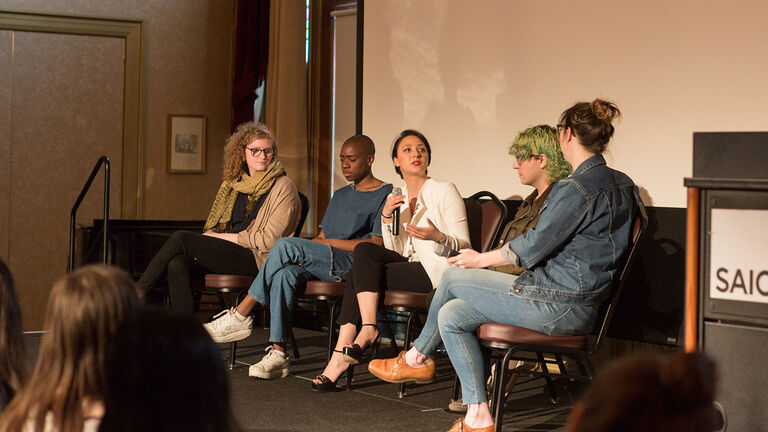
Curriculum & Courses
Graduate Curriculum & Courses
Degree Requirements and Specifications
- Completion schedule: Students have a maximum of four years from entry into the program to complete coursework and submit a final thesis. This includes time off for leaves-of-absences. Thesis in Progress: Students who have not submitted a finished thesis for review and approval by the end of the final semester of enrollment are given a Thesis in Progress grade (IP). All students with a Thesis in Progress grade (IP) will be charged the Thesis in Progress Fee in each subsequent full semester until the thesis is completed and approved and the grade is changed to Credit (CR). If the statute of limitations is reached without an approved thesis, the grade will be changed to No Credit (NCR).
- Transfer credits: A minimum of 30 credit hours must be completed in residence at SAIC. Up to 6 transfer credits may be requested at the time of application for admission and are subject to approval at that time. No transfer credit will be permitted after a student is admitted.
- Graduate Projects: Master of Arts students who are working on studio projects as a part of their degree requirement may enroll in MFA 6009 Graduate Projects. Students are limited to a total of 6 credits of graduate projects over a four semester period. Any MA student wishing to take a graduate project must obtain permission from both the advisor with whom they wish to study and the Dean of Graduate Studies. Students will receive a permission number from the faculty to register for the advisor's section of MFA 6009 Graduate Projects. MA students should meet with their department head to confirm that graduate advising is the type of class they need to fulfill graduation requirements.
- Full-Time Status Minimum Requirement: 9 credit hours
Courses
Take the Next Step
Visit the graduate admissions website or contact the graduate admissions office at 312.629.6100, 800.232.7242, or gradmiss@saic.edu.